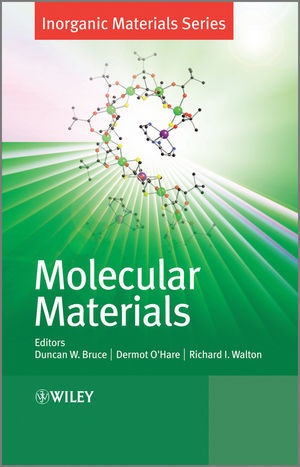Mehr lesen
Informationen zum Autor I have truly come a long way without rest. Born into a humble background, I now appreciate the taste of gradually achieving success in life. If everything had been accomplished from the beginning, what fun would life have held? The author of this book, Lawyer Bruce Yoon, worked as a Foreign Affairs Detective in Korea for five years before studying abroad in Australia, where he began studying computer science. He then explored software development and consulting while searching for his purpose. During that time, he pursued theological studies and later participated in M&A projects. Following his involvement in IT/BT businesses, he enrolled in law school and became an attorney. Klappentext With applications in optoelectronics and photonics, quantum information processing, nanotechnology and data storage, molecular materials enrich our daily lives in countless ways. These materials have properties that depend on their exact structure, the degree of order in the way the molecules are aligned and their crystalline nature. Small, delicate changes in molecular structure can totally alter the properties of the material in bulk. There has been increasing emphasis on functional metal complexes that demonstrate a wide range of physical phenomena. Molecular Materials represents the diversity of the area, encapsulating magnetic, optical and electrical properties, with chapters on: Metal-Based Quadratic Nonlinear Optical Materials Physical Properties of Metallomesogens Molecular Magnetic Materials Molecular Inorganic Conductors and Superconductors Molecular Nanomagnets Structured to include a clear introduction, a discussion of the basic concepts and up-to-date coverage of key aspects, each chapter provides a detailed review which conveys the excitement of work in that field. Additional volumes in the Inorganic Materials Series: Low-Dimensional Solids | Molecular Materials | Porous Materials | Energy Materials Zusammenfassung the book does an excellent job of putting together several different classes of materials. Many common points emerge, and the book may facilitate the development of hybrids in which the qualities of the parents are enhanced. Angew. Chem. Int. Ed. Inhaltsverzeichnis Inorganic Materials Series Preface. Preface. List of Contributors. 1 Metal-Based Quadratic Nonlinear Optical Materials ( Olivier Maury and Hubert Le Bozec ). 1.1 Introduction. 1.2 Basic Concepts of Second-Order Nonlinear Optics. 1.2.1 Introduction to Nonlinear Molecular Materials. 1.2.2 Molecular Engineering of Quadratic NLO Chromophores. 1.2.3 Experimental Measurements of Second-Order NLO Activities. 1.3 Dipolar Metal Complexes. 1.3.1 Metal Complexes as Donor Groups. 1.3.2 Metal Complexes as Acceptor Groups. 1.3.3 Bimetallic Push-Pull Complexes. 1.3.4 Metal Complexes as p-Conjugated Bridges. 1.4 Octupolar Metal Complexes. 1.4.1 Metal as Peripheral Donor (or Acceptor) Substituent. 1.4.2 Metal as Template. 1.4.3 Conformational Studies Using Second-Order NLO Activity Measurements. 1.5 Switching Optical Nonlinearities of Metal Complexes. 1.5.1 Redox Switching of Quadratic Nonlinearities. 1.5.2 Acid/Base Switching of Quadratic Nonlinearities. 1.5.3 Photoswitching of Quadratic Nonlinearities. 1.6 Towards the Design of Pre-Organised Materials. 1.6.1 Supramolecular Octupolar Self-Ordering Within Metallodendrimers. 1.6.2 Engineering of NLO-Active Crystals. 1.7 Conclusions. References. 2 Physical Properties of Metallomesogens ( Koen Binnemans ). 2.1 Introduction. 2.2 Overview of Mesophases. 2.3 Optical Properties. 2.3.1 Birefringence. 2.3.2 Light Absorption and Colour. 2.3.3 Luminescence. 2.3.4 Nonline...

